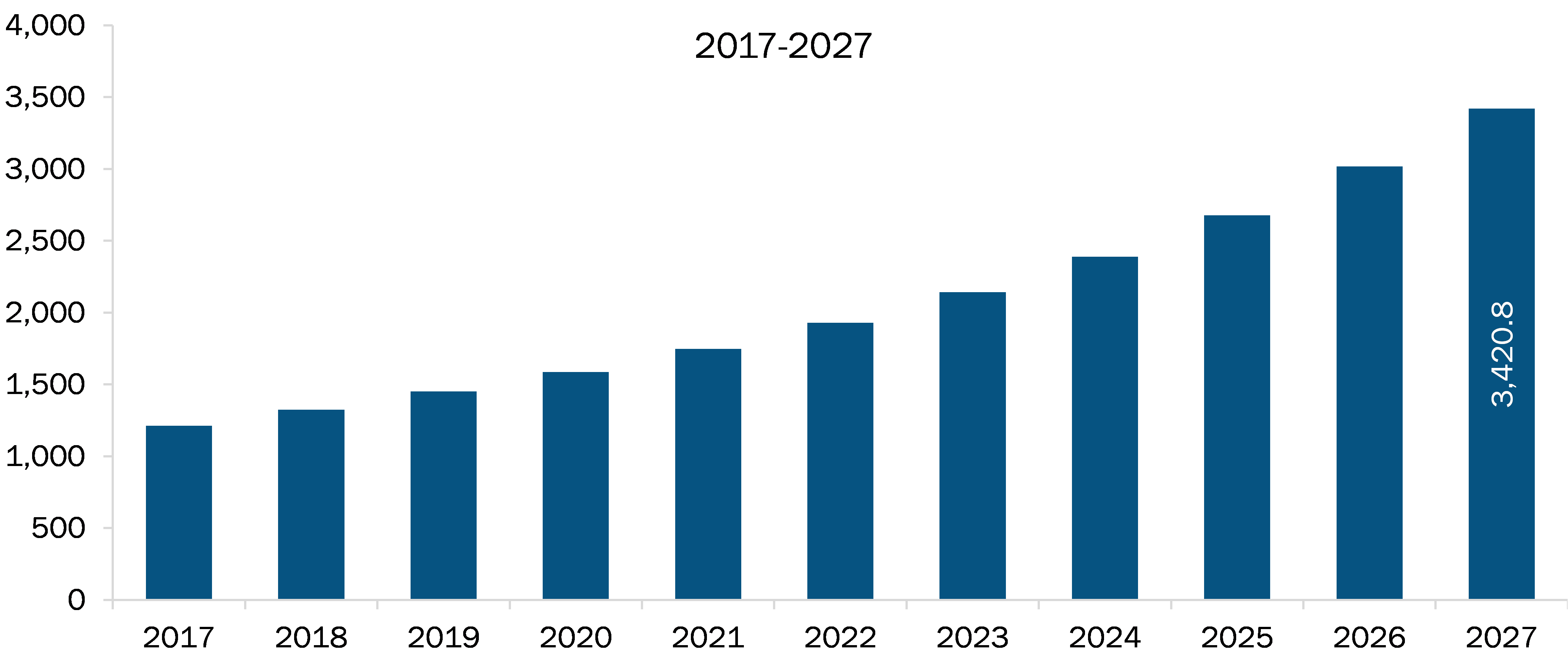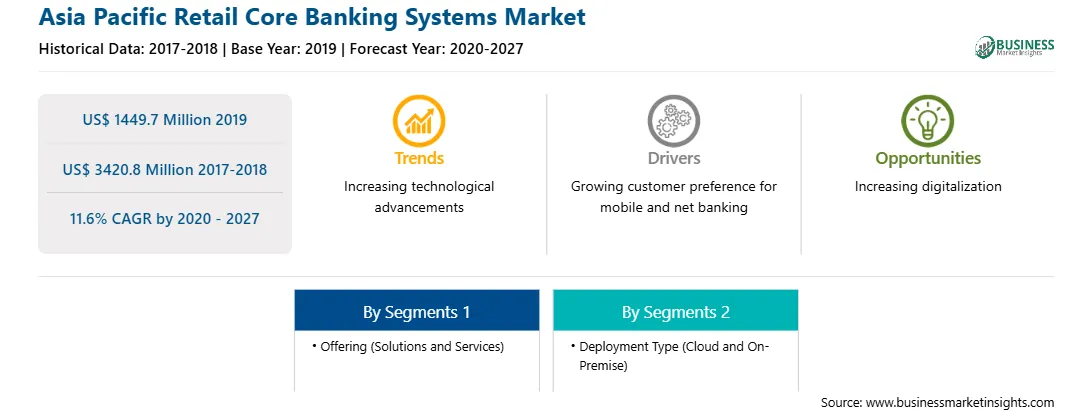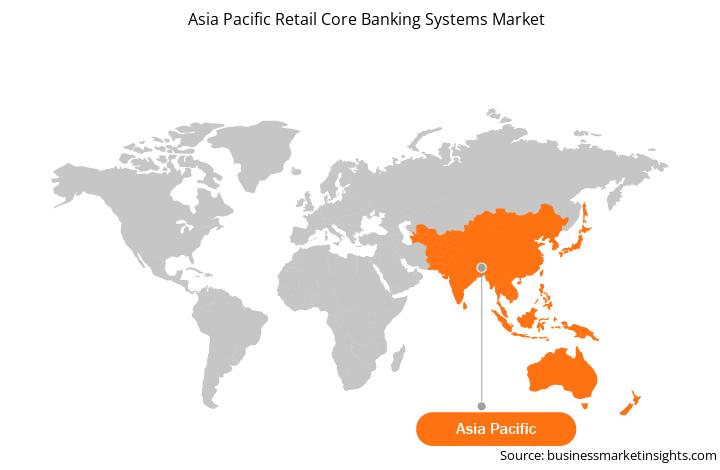Retail core banking systems are solutions for personal banking or consumer banking that offers banks the ability to serve their customers through digital channels better. These solutions help customers better manage their money by securely transferring and depositing it and accessing credit. Other services provided by these solutions include managing mortgages, account information, personal loans, certificates of deposit, debit/credit card, and other financial records. This market evaluates retail core banking systems players based on the various products offered by them to banks for managing retail banking financial transaction management.

Strategic insights for the Asia Pacific Retail Core Banking Systems provides data-driven analysis of the industry landscape, including current trends, key players, and regional nuances. These insights offer actionable recommendations, enabling readers to differentiate themselves from competitors by identifying untapped segments or developing unique value propositions. Leveraging data analytics, these insights help industry players anticipate the market shifts, whether investors, manufacturers, or other stakeholders. A future-oriented perspective is essential, helping stakeholders anticipate market shifts and position themselves for long-term success in this dynamic region. Ultimately, effective strategic insights empower readers to make informed decisions that drive profitability and achieve their business objectives within the market.

| Report Attribute | Details |
|---|---|
| Market size in 2019 | US$ 1449.7 Million |
| Market Size by 2027 | US$ 3420.8 Million |
| CAGR (2020 - 2027) | 11.6% |
| Historical Data | 2017-2018 |
| Forecast period | 2020-2027 |
| Segments Covered |
By Offering
|
| Regions and Countries Covered | Asia-Pacific
|
| Market leaders and key company profiles |
|
The geographic scope of the Asia Pacific Retail Core Banking Systems refers to the specific areas in which a business operates and competes. Understanding local distinctions, such as diverse consumer preferences (e.g., demand for specific plug types or battery backup durations), varying economic conditions, and regulatory environments, is crucial for tailoring strategies to specific markets. Businesses can expand their reach by identifying underserved areas or adapting their offerings to meet local demands. A clear market focus allows for more effective resource allocation, targeted marketing campaigns, and better positioning against local competitors, ultimately driving growth in those targeted areas.

The retail core banking systems market in Asia Pacific is expected to grow from 1449.7 million in 2019 to US$ US$ 3420.8 million by 2027; it is estimated to grow at a CAGR of 11.6% from 2020 to 2027. Regulators across the region have shown immense interest in encouraging the digital banks’ growth. Several countries also introduced license regimes, including Singapore and Taiwan, and the Hong Kong Special Administration Region. Further, countries such as Thailand and Malaysia are expected to follow the same. Moreover, fully digitalized banking services are already available in APAC countries, including Japan, India, South Korea, and Australia. The emergence of digital-only banks in the region is expected to propel the demand for retail core banking systems across the APAC region.
In terms of deployment type, the on-premise segment accounted for a larger share of the Asia Pacific retail core banking systems market in 2019. In terms of offering, the solutions segment held the largest share of the retail core banking systems market in 2019. Further, the cloud segment is anticipated to witness the higher CAGR growth during the forecast period. Based on country, the retail core banking systems market is segmented into China, Australia, Japan, India, South Korea, and the rest of APAC region. China held the largest share of the market in 2019.
The governments of Asia Pacific countries have been taking all possible steps, including the imposition of lockdown, to reduce the effect of the COVID-19 pandemic. The temporary shutdown of companies had resulted in increased adoption of digital channels of communication among the customers and various organizations. However, during the Q1 and Q2 2020, several companies were temporarily shut, which created a supply disruption among the retail core banking systems vendors and banks, which imparted a slight restraining effect on the retail core banking systems market. However, market resumed the growth after gradual lifting of lockdown impositions in various countries.
A few major primary and secondary sources referred to for preparing this report on the retail core banking systems market in Asia Pacific are company websites, annual reports, financial reports, national government documents, and statistical database, among others. Avaloq, Fiserv, Inc., Infosys Ltd., Oracle Corporation, SAP SE, Sopra Steria, Tata Consultancy Services Limited, Temenos Headquarters SA, Intellect Design Arena Ltd, and FIS are among the major companies listed in the report.
The Asia Pacific Retail Core Banking Systems Market is valued at US$ 1449.7 Million in 2019, it is projected to reach US$ 3420.8 Million by 2027.
As per our report Asia Pacific Retail Core Banking Systems Market, the market size is valued at US$ 1449.7 Million in 2019, projecting it to reach US$ 3420.8 Million by 2027. This translates to a CAGR of approximately 11.6% during the forecast period.
The Asia Pacific Retail Core Banking Systems Market report typically cover these key segments-
The historic period, base year, and forecast period can vary slightly depending on the specific market research report. However, for the Asia Pacific Retail Core Banking Systems Market report:
The Asia Pacific Retail Core Banking Systems Market is populated by several key players, each contributing to its growth and innovation. Some of the major players include:
The Asia Pacific Retail Core Banking Systems Market report is valuable for diverse stakeholders, including:
Essentially, anyone involved in or considering involvement in the Asia Pacific Retail Core Banking Systems Market value chain can benefit from the information contained in a comprehensive market report.